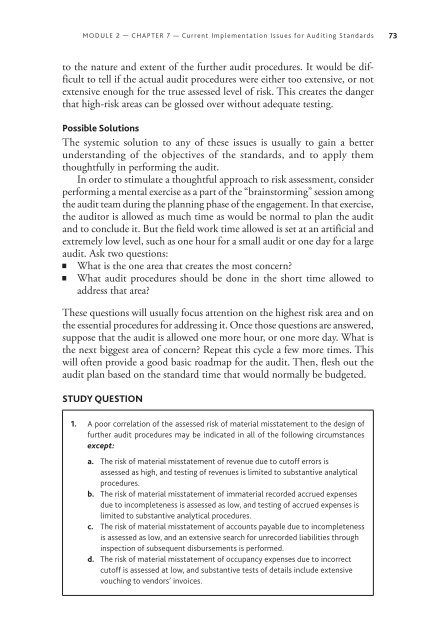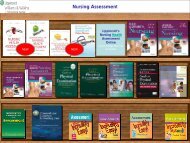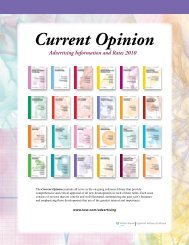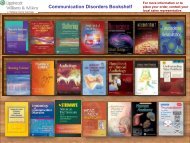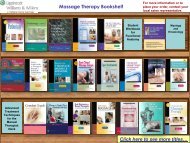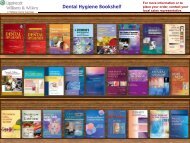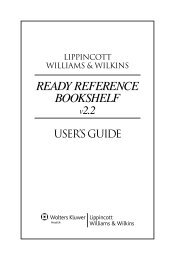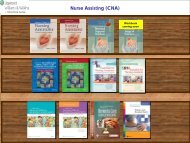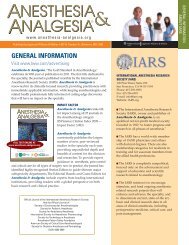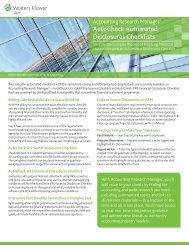TOP AUDITING ISSUES FOR 2013 - CCH
TOP AUDITING ISSUES FOR 2013 - CCH
TOP AUDITING ISSUES FOR 2013 - CCH
Create successful ePaper yourself
Turn your PDF publications into a flip-book with our unique Google optimized e-Paper software.
MODULE 2 — CHAPTER 7 — Current Implementation Issues for Auditing Standards 73<br />
to the nature and extent of the further audit procedures. It would be difficult<br />
to tell if the actual audit procedures were either too extensive, or not<br />
extensive enough for the true assessed level of risk. This creates the danger<br />
that high-risk areas can be glossed over without adequate testing.<br />
Possible Solutions<br />
The systemic solution to any of these issues is usually to gain a better<br />
understanding of the objectives of the standards, and to apply them<br />
thoughtfully in performing the audit.<br />
In order to stimulate a thoughtful approach to risk assessment, consider<br />
performing a mental exercise as a part of the “brainstorming” session among<br />
the audit team during the planning phase of the engagement. In that exercise,<br />
the auditor is allowed as much time as would be normal to plan the audit<br />
and to conclude it. But the field work time allowed is set at an artificial and<br />
extremely low level, such as one hour for a small audit or one day for a large<br />
audit. Ask two questions:<br />
What is the one area that creates the most concern?<br />
What audit procedures should be done in the short time allowed to<br />
address that area?<br />
These questions will usually focus attention on the highest risk area and on<br />
the essential procedures for addressing it. Once those questions are answered,<br />
suppose that the audit is allowed one more hour, or one more day. What is<br />
the next biggest area of concern? Repeat this cycle a few more times. This<br />
will often provide a good basic roadmap for the audit. Then, flesh out the<br />
audit plan based on the standard time that would normally be budgeted.<br />
STUDY QUESTION<br />
1. A poor correlation of the assessed risk of material misstatement to the design of<br />
further audit procedures may be indicated in all of the following circumstances<br />
except:<br />
a. The risk of material misstatement of revenue due to cutoff errors is<br />
assessed as high, and testing of revenues is limited to substantive analytical<br />
procedures.<br />
b. The risk of material misstatement of immaterial recorded accrued expenses<br />
due to incompleteness is assessed as low, and testing of accrued expenses is<br />
limited to substantive analytical procedures.<br />
c. The risk of material misstatement of accounts payable due to incompleteness<br />
is assessed as low, and an extensive search for unrecorded liabilities through<br />
inspection of subsequent disbursements is performed.<br />
d. The risk of material misstatement of occupancy expenses due to incorrect<br />
cutoff is assessed at low, and substantive tests of details include extensive<br />
vouching to vendors’ invoices.


